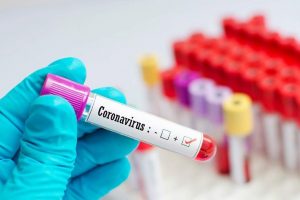Introducing different types of corona tests; From PCR to antigen and antibody
If you are confused about different corona tests or want to know more about them, stay tuned for this article.
These days, when we are unfortunately witnessing the re-emergence of the coronavirus in all countries, you have probably had the experience of searching the Internet to learn more about the types of Corona tests, and if you have looked at various sources in this area. Terms like PCR can be a little confusing. An antigen or antibody test is confusing in itself. Now add other words such as molecular test, serology, and antigen.
These strange and varied expressions may give the impression that many tests detect the covid virus. But the fact is that all of these expressions, some of which are used to refer to a trial, can be categorized into two or three general categories. The rest of the names refer only to the different techniques used in the corona test, not the different types of tests.

Two general types of coronary artery tests: diagnostic and antibody:
Currently, there are generally only two main types of coronary tests: diagnostic tests that look for the effects of active coronavirus on mucus or saliva and blood tests that look for antibodies or evidence that shows the immune system Prepared in advance.
The first category, which aims to identify the active coronavirus in the body, includes molecular (genomic) testing and antigen (side-stream) testing. The second category, which only determines whether your body has been infected with the coronavirus in the past, is a serological test.
There are different techniques for implementing each of these three experimental models. For example, for molecular or genomic testing, RT-PCR, clinical RT-LAMP, and CRISPR are used. In antigen testing or LFT, there is only the fast antigen method, and for antibody or serology testing, two ways, ELISA and Rapid Test (immunochromatography), are used.
As we have said, there are two types of molecular and antigen tests to diagnose SARS-CoV-2 in the body, the virus that causes Covid disease, except that in the antigen method, the tests look for a piece. They are viruses, but in molecular or genomic methods, experiments try to find the nucleic acid that belongs to the virus, such as RNA (which, along with DNA, makes proteins in the body).
Tests that look for traces of the RNA virus are very sensitive. The susceptibility is so high that the test result may still be positive even after complete recovery from the disease and the virus transmission.
In contrast, antigen tests are faster and cheaper but lack the accuracy and sensitivity of RNA testing. In other words, antigen tests produce more “false negative” molecular tests, and cases of the virus may no longer be detected. On the other hand, antigen and molecular tests cannot predict that a person’s disease is no longer contagious.
In the following, we will review the various methods used in corona tests.

Different types of corona tests:
PCR method in which a test is sent to a laboratory to diagnose a disease.
LFT (side current), antigen, or immediate test can diagnose coronary artery disease but is not as accurate as PCR tests.
An antibody or blood test cannot detect the active virus but determines whether the body has produced 19 antibodies against Covid.
What is PCR?
PCR, or polymerase chain reaction, amplifies small amounts of DNA to be analyzed. Discovered in the 1980s by American biochemist Kerry Malis and awarded the Nobel Prize in Chemistry, the method uses heating and cooling cycles to produce millions of copies of very small amounts of DNA. Fluorescent dye, which begins to glow in the presence of DNA, can detect the part of DNA in a compound. This method is useful for detecting the presence of a pathogen in the body or at host levels.
But to diagnose a virus-like SARS-CoV-2, which causes coronary heart disease, scientists must first turn its genome, which is made up of single-stranded RNA, into DNA. They do this with the help of a useful enzyme called “reverse transcription” or “transcription.” Combining these two techniques, converting RNA to DNA and then amplifying it, we achieve the same common RT-PCR method that you have probably heard about more than any other corona test.
PCR testing has the highest accuracy and sensitivity among coronary tests; in other words, RT-PCR is a method in which the RNA of a virus is first converted into DNA and then amplified so that it can be decomposed by cooling and heating cycles.
Currently, RT-PCR or PCR is the gold standard and reference method for the definitive diagnosis of coronary heart disease. PCR is more sensitive than other methods and media.
PCR test method:
In most cases, the sampler collects the nasal or throat mucosa using a special swab to perform the PCR test. Some molecular tests use saliva to make things easier for people.
Experiments using the nasopharyngeal swab, which goes deep into the nose, are currently the most common PCR method that requires on-site sampling and laboratory analysis.
PCR test problems:
Although PCR testing is more sensitive and accurate than other methods, it has its limitations. The results of this test are not fast and must be sent to the laboratory for testing, in which case the person will have to wait a few days to be informed of the test results. In addition, PCR testing requires expensive equipment, specialized laboratories, and skilled specialists who can test the test properly.
In addition, PCR tests are more accurate in detecting the presence of a virus than detecting its absence. The results of a study in February 2021 showed that in 30 cases, the PCR test showed false-negative results, which means that the patient was misdiagnosed with the coronavirus.
False-positive results may also occur in PCR tests. Some of these tests are so sensitive that they may even find a dead, inactive virus in the body of the recovered person and misdiagnose the recovered person still living with the virus.
What is an immediate corona or antigen test?

Lateral flow test (LFT) or antigen test is often called rapid test because test results are prepared much faster than PCR tests. In addition to much lower production costs and no need for a laboratory to test the test result, this feature has led to antigen kits to test large numbers of people, for example, at airports.
An antigen test, like PCR, is a genomic test used to detect live and active coronavirus in the body. In this experimental model, a sample of nasal or throat mucosa collected by a special swab is spun in a solution of antibodies that bind to corona proteins. The answer is then poured into a plastic device that is somewhat similar to a pregnancy test. If the test is performed correctly, a colored line will appear on the device. The appearance of two lines means that the person is infected with the coronavirus.
Antigen testing is similar to PCR but faster, cheaper, and slightly more accurate
The most important advantage of PCR antigen testing is that there is no need to send the sample to the laboratory, and the test result is determined within 15 to 30 minutes. In addition, these tests are less expensive than PCR and do not require expertise.
How to do an antigen test:
From the patient’s point of view, the antigen test is almost similar to the molecular Test or PCR. In this way, the sampler uses a special swab to collect mucus from the bottom of the nose or throat. But the difference between this experimental model and PCR is in the way it is analyzed. At the same time, PCR testing requires specialized personnel to convert virus RNA into DNA using sophisticated methods and then amplify the DNA so that it can be tested in an antigen method or an immediate test in a small plastic device. Contract analysis. It is done, and the result of the pregnancy test is obtained quickly and easily. If only one color bar appears, the test result is negative, and if two color bars appear, the test result is positive.
In some countries, antigen tests may be performed clinically. This means that you do not need to go to the lab to do this.
Antigen testing problems:
If the antigen test is positive, it is most likely correct, and the person has coronary heart disease. Because these experimental models are very accurate in diagnosing the coronavirus, but the main problem with antigen testing is that in some cases, it cannot detect the active coronavirus and mistakenly shows a negative test result. If you have symptoms of coronavirus, but the antigen test is negative, it is best to use a PCR test to make sure the test is fake.
In other words, the antigen test has somehow sacrificed speed. A review of 64 studies in Europe and the United States showed large differences in the accuracy of different antigen tests. The study also found that antigen testing was much better in people with Covid 19 symptoms than in asymptomatic people. The sensitivity of corona detection in antigen testing in symptomatic individuals varies between 34% and 88%, with an average accuracy of 72%. In asymptomatic individuals, this experimental model correctly identified only 58% of infected individuals.
While the use of LFT tests in screening large populations of asymptomatic individuals has become very popular, experts doubt the usefulness of this experimental model.
What is an antibody or serology test?
Antibody testing is fundamentally different from PCR and antigen testing and does the same thing.
Antibodies are proteins in the blood that the immune system produces to fight off an external invader, such as a virus. In other words, the Covid 19 antibody test does not detect the active coronavirus in the body; it only tells you if you have had the coronavirus before. Antibodies are not detectable for at least a few days after infection.
The antibody test only shows if a person has had coronary arteries in the past
If the corona antibody test is positive, does that mean your body is immune to re-infection? Unfortunately, the answer to this question is still unclear. Experts recommend that you continue to take preventive measures even if you have the disease because, in some cases, a person will have recurrent coronary heart disease.
According to one study, people who survived even mild cases of coronary artery disease produced antibodies for at least five to seven months. Antibody tests are used to assess the immune system response in people who have received the corona vaccine and should not diagnose the disease.

Antibody test method:
Unlike PCR, which usually uses a swab to detect Covid 19, a blood sample is used in an antibody test. There is more active coronavirus in the airways than in the blood, but many antibodies are found after coronary heart disease.
It is not possible to have an antibody test at home, and you should go to the clinic for a blood sample. The sampler either uses finger or vein blood to perform the test and depending on the type of test, analysis of the test result may take several hours.
Of course, a clinical antibody test is performed using the blood of a person’s fingers in emergencies, and the test result is ready in 15 minutes.
Antibody test problems:
Perhaps the main problem with antibody testing is that people often confuse it with corona testing when it aims to detect the immune system’s response to the virus. The result of an antibody test only tells you if you have had coronary heart disease before and, if so, how many antibodies your body has produced against the virus. Suppose you are looking to diagnose coronary heart disease. In that case, you should have a PCR test because blood tests cannot detect the effects of the coronavirus, which usually accumulates in the respiratory tract.
In addition, if antibodies are produced early in the body, the antibody test may not make the right results. Therefore, it is recommended that you have at least 14 days from the onset of the disease for an anti-inflammatory test. On the other hand, the probability of false-positive results in this test is high due to the interaction with other conditions. This means that the test may mistakenly detect antibodies produced against another disease for the coronavirus.
Antibody testing uses ELISA and immediate or immunochromatographic testing. The first method requires laboratory and resources, and the test result takes 1 to 5 hours. Quick test: Although the test result’s preparation takes about 15 to 30 minutes, it can only detect whether there are coronary antibodies in the body, but it cannot determine its amount.
RT-LAMP test
The isothermal ring amplification (LAMP) technique is similar to PCR for DNA amplification, except it produces more copies of the virus RNA at a constant temperature instead of heating and cooling. Therefore, it can provide much faster results than PCR.
The LAMP test uses a swab to sample the mucus or mucous membranes of the nose or throat from a severe cough. Using a swab in this test is not as annoying as PCR. The samples are then placed in reagent vials containing RNA detection materials and heated in a special apparatus for 20 minutes. The device then checks the model to determine if the RNA has the coronavirus.
The LAMP test has high sensitivity and accuracy of PCR and the determination time is much shorter than the PCR test. However, this test is not yet widely available, and the same PCR test is used in most countries.
CRISPR test
Using CRISPR gene-editing technology, the researchers experimented with detecting the coronavirus in just 5 minutes. CRISPR testing does not require expensive laboratory equipment and can be performed in physicians’ offices, schools, and office buildings.
The CRISPR test detects a 20-strand RNA strand specific to the coronavirus by creating a “guide” RNA that completes the target sequence and can be attached to it in solution.
When the guide connects to the target chain, the CRISPR tool Cas13 “Scissors” turns on and separates adjacent single-stranded RNAs. As a result of these cuts, a fluorescent particle is released into the solution. When the laser light shines on the sample, the emitted fluorescent particle lights up, indicating the coronavirus in the model.
The CRISPR test, like PCR, is very accurate and sensitive, and the fluorescence brightness is proportional to the amount of virus RNA in the sample. This means that the test determines whether a person has the coronavirus and how much virus there is in their body. However, to perform this test, researchers must first amplify the possible RNA of the virus and then use it to increase the chances of detecting a trace of the virus. This increases the complexity, cost, and time of the process and requires trace chemicals.
Types of corona tests at home:
In some European countries, such as France, there are “home self-test kits” for Covid disease that citizens can get from pharmacies. These kits are antigen-type and can determine the test result in less than 30 minutes without the need for a sampler or laboratory. However, these kits are not ubiquitous and are about 20% less accurate than PCR tests.
There is another home test in some countries that do not require a nasal swab and removes saliva. In this test, a person with suspected coronary heart disease pours about two millimeters of saliva into a sample container and sends it to a lab for testing. This sample is tested with LAMP technology in the laboratory, and the result is sent to the person via SMS.
Although this test model is easily performed at home and does not require an expert on-site, the announcement of the result still takes 48 hours.
In some countries, corona home testing is still a type of PCR and antibody and requires on-site samples and laboratory tests. In this procedure, the person with coronary artery disease spends time through the website instead of going to the clinic for testing, and the sampler is sent home for PCR or on-site antibody testing. Test results are sent home within 48 hours of testing in the laboratory. The cost of applying for a Corona home test is currently about one-third of the cost of the test itself.

Interpretation of Corona test result:
In diagnostic tests, such as PCR and antigen tests, a negative result means that the test shows no effect of the SARS-CoV-2 virus, the cause of coronary heart disease, in the body, and a negative impact means that the virus in The body is located. The body is more likely to have coronary heart disease.
However, there is no perfect test, and it is always possible that the test result is wrong. In these cases, a false-negative result means that the test is not coronary, and a false-positive result implies that the test is diagnosed in a healthy person with coronary heart disease.
Therefore, if you have symptoms but the PCR test is negative, it is best to stay home and avoid others; as a result, it may be false.
A negative result in serological or antibody tests indicates that the test did not find any antibodies against the coronavirus. Of course, this does not mean that a person has never been exposed to the coronavirus because the body produces antibodies at least two weeks after the onset of the disease. If the test is done earlier, the result will not be correct. Therefore, it is recommended that antibody testing be performed at least 14 days after the onset of symptoms.
Similarly, suppose a serological test is positive. In that case, it does not necessarily mean that the person has already been infected with the coronavirus. Still, it only tells you that the person has been exposed to the virus for some time and that the immune system has antibodies against it.
Unfortunately, scientists still do not know how long these antibodies are active in the body and how much they protect the body against subsequent coronavirus infection. Therefore, a positive serological test should not mean that the person will no longer be infected with the coronavirus.
| Types of corona tests | Molecular / genomic testing | Antigen / LFT test | Antibody / serology testing |
|---|---|---|---|
| The purpose of the test | Detection of live virus in the body | Detection of live virus in the body | Detects the body’s immune response to the virus |
| Technique | RT-PCR test RT-LAMP clinical trial CRISPR test | Immediate antigen testing | ELISA test Immediate test (immunochromatography) |
| What is a search test? | Look for viral genetic material (RNA) in a sample taken from the patient (usually a nasal swab). | Search for viral genetic material (RNA) inpatient specimens (for nasal swabs) | Following the immune response (antibody) against the virus in the patient’s body fluids (usually blood) |
| What does a positive test mean? | There is a virus in the body | There is a virus in the body | The patient is exposed to the virus and is recovering or recovering. |
| Advantages | PCR test: Very high sensitivity and accuracy RT-LAMP test: A function similar to PCR but can be performed clinically. Test results in less than an hour CRISPR test: A function similar to PCR but can be performed clinically. Test results 15 to 30 minutes | Easy and cheap process; Test results 15 to 30 minutes; Can be done clinically; High accuracy | ELISA: More reliable than immediate testing. Provide information on the concentration of antibodies in the blood Immediate testing: Requires fewer resources than ELISA. Can be done clinically; Test results in 15 to 30 minutes |
| Disadvantages | PCR test: requires a laboratory. Need for specialized staff; Long conclusion time (24 to 72 hours); Lack of test kits; Expensive RT-LAMP test: Not yet available for a clinical trial. Uncertain price CRISPR test: Not yet available for a clinical trial. Uncertain price | It is less sensitive than the PCR test | If the antibody is tested early and before the body produces the antibody, there are many mistakes in the conclusion Possibility of false-positive results due to interaction with other diseases ELISA test: requires a laboratory. Need a lot of resources; Long conclusion time (1 to 5 hours) Immediate testing: Provides only qualitative information on the presence or absence of antibodies |


